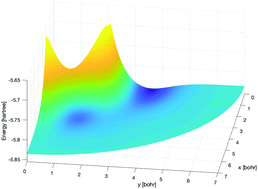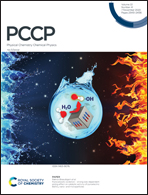Bonding in the helium dimer in strong magnetic fields: the role of spin and angular momentum
Abstract
We investigate the helium dimer in strong magnetic fields, focusing on the spectrum of low-lying electronic states and their dissociation curves, at the full configuration-interaction level of theory. To address the loss of cylindrical symmetry and angular momentum as a good quantum number for nontrivial angles between the bond axis and magnetic field, we introduce the almost quantized angular momentum (AQAM) and show that it provides useful information about states in arbitrary orientations. In general, strong magnetic fields dramatically rearrange the spectrum, with the orbital Zeeman effect bringing down states of higher angular momentum below the states with pure σ character as the field strength increases. In addition, the spin Zeeman effect pushes triplet states below the lowest singlet; in particular, a field of one atomic unit is strong enough to push a quintet state below the triplets. In general, the angle between the bond axis and the magnetic field also continuously modulates the degree of σ, π, and δ character of bonds and the previously identified perpendicular paramagnetic bonding mechanism is found to be common among excited states. Electronic states with preferred skew field orientations are identified and rationalized in terms of permanent and induced electronic currents.

- This article is part of the themed collection: 2020 PCCP HOT Articles


 Please wait while we load your content...
Please wait while we load your content...